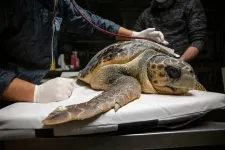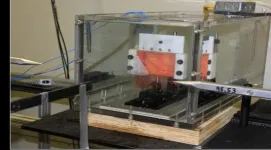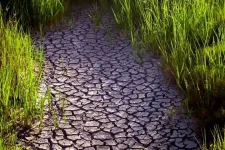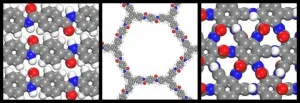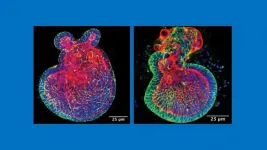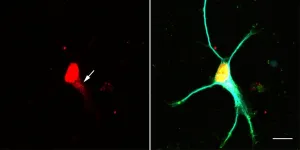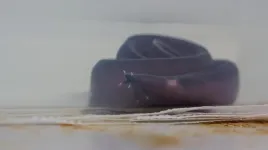(Press-News.org) Sea turtles are witnesses and victims of the high level of plastic pollution of the Adriatic Sea. A group of researchers at the University of Bologna analysed 45 turtles hospitalised at Fondazione Cetacea in Riccione and found plastic debris in their faeces. Besides confirming the role of turtles as ideal sentinels to monitor plastic pollution in the sea, the results of their analysis - published in the journal Frontiers of Marine Medicine - crucially show how the plastic debris in their intestines can dangerously alter their microbiota, eventually compromising their health.
"The results of this study prove the pervasiveness of plastic pollution in the ecosystem of the Adriatic Sea, a marine environment intensively exploited by the industry", explains Elena Biagi, the first author of the study who is also a researcher at the Department of Pharmacy and Biotechnology of the University of Bologna. "Plastic waste originates debris that enters the marine food webs and can be found in high concentrations across the food chain up to the top predators, such as marine turtles. This bears severe consequences on their health, some of which are also due to the variations caused in their gut microbiota".
TURTLES AS SENTINELS
It has been estimated that more than 10 million tons of plastic enter the oceans every year, becoming responsible for more than 80% of marine litter. Between marine mammals, birds and sea turtles, around 260 species are threatened by plastic debris because of entanglement and/or ingestion. Moreover, in time, plastic breaks down into smaller fragments and filaments (microplastics) that fish and shellfish species may ingest, causing microplastics to progressively accumulate across the food chain up to the top predators, including humans.
In this context, sea turtles (Caretta caretta) represent a flagship species. Indeed, they allow monitoring the level of plastic pollution in the sea because their health strictly connects with that of the environment they live in. Plastic waste, in particular, is a dangerous threat for them: sea turtles often mistake plastic waste for preys and eat or ingest them while moving around, or feed on small fish that previously ate plastics.
Researchers tried to study their environmental context as precisely as possible. They analysed the faecal samples of 45 turtles hosted at the Sea Turtles Rescue Center (CRTM) of the "Fondazione Cetacea" in Riccione (Rimini, Italy). Pollution in the Adriatic Sea is mostly due to intensive fishing, fish farming and tourism and it is at a worryingly high level. This is indeed confirmed by the plastic debris contained in all 45 samples.
"Our results show that all 45 samples under study contained plastic waste no matter how long the turtles stayed at the rescue centre," says Prof. Silvia Franzellitti who is one of the authors of the study and works at the Lab of Environmental and Animal Physiology of the University of Bologna. "A comparison of our dataset with the existing literature on the matter is difficult to carry out because previous studies considered data obtained from necroscopies on dead animals. Despite this, our research suggests that the level of plastic contamination in the faeces of the observed turtles is very high both in terms of the number of animals that ingested plastic and of the concentration of plastic debris in their faeces".
PLASTICS AND THE GUT MICROBIOTA
The data of this study tell us something about marine pollution and the turtles' health. Once ingested, plastic debris piles up in the last part of their intestinal tract, where it can stay for weeks before being expelled. Here plastic debris can cause epithelial damages as well as favour toxic chemicals to be absorbed. Finally, plastic debris can force changes in the gut microbiota, eventually altering its composition and functioning.
The microbiota plays a central role in all vertebrates: it helps digestion and the assimilation of nutrients, regulates metabolism, engages with the immune system and helps prevent pathogenic colonization. This is why any change in the microbiota can have serious consequences on the health of the organism.
"Our analysis allowed us to link the presence of plastic debris to specific pathological alterations of the gut microbiota of the turtles and the consequent negative effects on their health", states Elena Biagi. "For instance, our results show that plastic debris can act as a carrier of some bacterial communities that evolved to thrive alongside toxic chemicals or of some pathogens that are usually found in marine environments. These bacteria and pathogens could then reach the turtles' intestinal ecosystem through plastic debris".
THE AUTHORS OF THE STUDY
This study crucially confirms that reducing plastic waste in the sea is of the utmost importance. Fondazione Cetacea and the University of Bologna (Unit of Microbiome Science and Biotechnology of the Department of Pharmacy and Biotechnology and the Lab of animal and environmental Physiology of the Department of Biological, Geological and Environmental Sciences) worked together to achieve these important results. This study was also possible thanks to the participation of the institutions involved in Fano Marine Center, an international hub for research and marine ecology and biology in the Mediterranean Area.
Fondazione Cetacea is an NGO that focuses on marine ecosystem protection and, more precisely, on the Adriatic Sea through actions of dissemination, education and conservation. Fondazione Cetacea also manages the Sea Turtles Rescue Center (CRTM) where, every year, dozens of turtles that were entangled in fishing nets or stranded during winter are taken care of and then released back into the sea. These results are also a virtuous example of how scientific research and biodiversity protection and preservation can successfully combine with easily collectable samples of indicators of the marine ecosystem health.
INFORMATION:
This study was published in the journal Frontiers in Marine Science with the title "Impact of plastic debris on the gut microbiota of Caretta caretta from Northwestern Adriatic Sea". The authors are Elena Biagi, Margherita Musella, Giorgia Palladino, Daniel Scicchitano, Simone Rampelli, Silvia Franzellitti and Marco Candela all from the University of Bologna, and Valeria Angelini, Sauro Pari, Chiara Roncari from Fondazione Cetacea Onlus.
RESEARCH TRIANGLE PARK, N.C. -- Research shows that Soldiers exposed to shockwaves from military explosives are at a higher risk for developing Alzheimer's disease -- even those that don't have traumatic brain injuries from those blasts. A new Army-funded study identifies how those blasts affect the brain.
Researchers at the University of North Carolina at Pembroke in collaboration with the U.S. Army Combat Capabilities Development Command, now known as DEVCOM, the Army Research Laboratory, and the National Institutes of Health found that the mystery behind blast-induced neurological ...
UNIVERSITY PARK, Pa. -- The optimal timeframe for donating convalescent plasma for use in COVID-19 immunotherapy, which was given emergency use authorization by the Food and Drug Administration in August 2020, is within 60 days of the onset of symptoms, according to a new Penn State-led study. The research also reveals that the ideal convalescent plasma donor is a recovered COVID-19 patient who is older than 30 and whose illness had been severe.
"Millions of individuals worldwide have recovered from COVID-19 and may be eligible for participation in convalescent plasma donor programs," said Vivek Kapur, professor of microbiology and infectious diseases, Penn State. "Our findings enable identification ...
CHAMPAIGN, Ill. --Many climate models focus on scenarios decades into the future, making their outcomes seem unreliable and problematic for decision-making in the immediate future. In a proactive move, researchers are using short-term forecasts to stress the urgency of drought risk in the United States and inform policymakers' actions now.
A new study led by University of Illinois Urbana-Champaign civil and environmental engineering professor Ximing Cai examines how drought propagates through climate, hydrological, ecological and social systems throughout different U.S. regions. The results are published in the journal Geophysical Research Letters.
"The same amount of precipitation, or the lack of thereof, in one region could have very different impacts on the hydrologic ...
Black men and women, as well as adolescent boys and girls, may react differently to perceived racial discrimination, with Black women and girls engaging in more exercise and better eating habits than Black men and boys when faced with discrimination, according to research published by the American Psychological Association.
"In this study, Black women and girls didn't just survive in the face of racism, they actually responded in a positive manner, in terms of their health behavior," said lead researcher Frederick Gibbons, PhD, with the University of Connecticut. "This gives us some hope that despite the spike in racism across the country, some people are finding healthy ways to cope." ...
ADELPHI, Md. -- Army researchers reached a breakthrough in the nascent science of two-dimensional polymers thanks to a collaborative program that enlists the help of lead scientists and engineers across academia known as joint faculty appointments.
Researchers from the U.S. Army Combat Capabilities Development Command, now known as DEVCOM, Army Research Laboratory partnered with Prof. Steve Lustig, a joint faculty appointment at Northeastern University, to accelerate the development of 2D polymers for military applications.
The collaboration with ARL Northeast led to a groundbreaking study published in the peer-reviewed scientific journal Macromolecules. Editors featured the research in a cover article.
"2D polymers have been studied very seriously from a synthetic ...
Researchers have developed a tool to identify security and privacy risks associated with Covid-19 contact tracing apps.
COVIDGuardian, the first automated security and privacy assessment tool, tests contact tracing apps for potential threats such as malware, embedded trackers and private information leakage.
Using the COVIDGuardian tool, cybersecurity experts assessed 40 Covid-19 contact tracing apps that have been employed worldwide for potential privacy and security threats. Their findings include that:
72.5 per cent of the apps use at least one insecure cryptographic ...
Medical researchers have long understood that a pregnant mother's diet has a profound impact on her developing fetus's immune system and that babies -- especially those born prematurely -- who are fed breast milk have a more robust ability to fight disease, suggesting that even after childbirth, a mother's diet matters. However, the biological mechanisms underlying these connections have remained unclear.
Now, in a study published Feb. 15, 2021, in the journal Nature Communications, a Johns Hopkins Medicine research team reports that pregnant mice fed a diet rich in a molecule found abundantly in cruciferous vegetables -- such as broccoli, Brussels sprouts and cauliflower -- gave birth to pups with stronger protection against necrotizing enterocolitis (NEC). ...
Neurodegenerative diseases, such as various forms of senile dementia or amyotrophic lateral sclerosis (ALS), have one thing in common: large amounts of certain RNA-protein complexes (snRNPs) are produced and deposited in the nerve cells of those affected - and this hinders the function of the cells. The overproduction is possibly caused by a malfunction in the assembly of the protein complexes.
How the production of these protein complexes is regulated was unknown until now. Researchers from Martinsried and Würzburg in Bavaria, Germany, have solved the puzzle and now report on it in the open access journal Nature Communications. They describe in detail a signaling pathway that prevents the overproduction of snRNPs when they are not needed. The results should ...
A diet rich in human food may be wreaking havoc on the health of urban coyotes, according to a new study by University of Alberta biologists.
The research team from the Faculty of Science examined the stomach contents, gut microbiome and overall health of nearly 100 coyotes in Edmonton's capital region. Their results also show coyotes that consume more human food have more human-like gut bacteria--with potential impact on their nutrition, immune function and, based on similar findings in dogs, even behaviour.
"If eating human food disturbs the 'natural' coyote gut bacteria, it is possible that eating human food has the potential to affect all ...
The answer to the age-old mystery of the evolutionary origins of vertebrate eyes may lie in hagfish, according to a new study by biologists at the University of Alberta.
"Hagfish eyes can help us understand the origins of human vision by expanding our understanding of the early steps in vertebrate eye evolution," explained lead author Emily Dong, who conducted the research during her graduate studies with Ted Allison, a professor in the Faculty of Science and member of the U of A's Neuroscience and Mental Health Institute. "Our findings solidify the hagfish's place among vertebrates and open the door to further research to uncover the finer details ...
